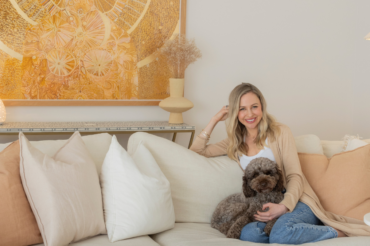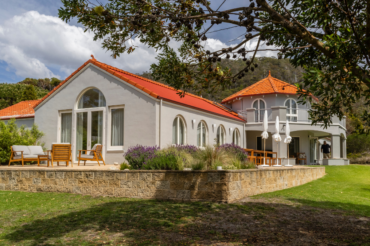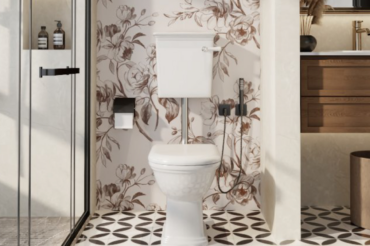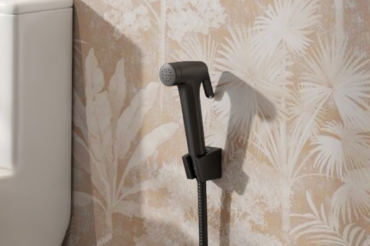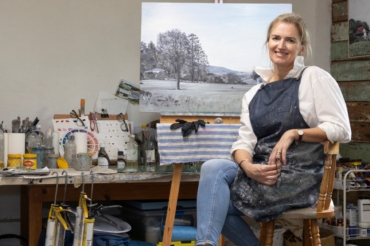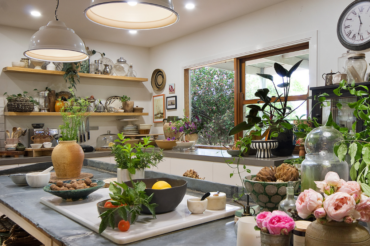
One million plastic bottles are discarded every minute around the world. An innovative soft furnishings company is helping to address this environmental disaster by making home accessories from recycled waste plastic.
As ocean sailors, Rupert and Nikki Rowe were well acquainted with the problem of maritime garbage patches, huge aggregations of predominantly discarded plastics clogging up the world’s oceans and causing catastrophic impact on marine life and ecosystems. They’d spent a collective 23 years based in the south of France, crewing on super yachts sailing the Mediterranean, Caribbean and other central American seas and seen firsthand the appalling problem of plastic waste, which UNESCO estimates makes up 80 per cent of marine pollution and by 2050 will outweigh all the fish in the sea.
So when Australian-born Nikki and Englishman Rupert came home from the sea about the time their first child was born, concern for the environment was uppermost in their minds. They bought an apartment in Antibes on the French Riviera and refurbished it using antiques and upcycled furniture they’d been collecting and storing in a shed in their coastal hometown. This morphed into an antiques business, which in turn led to a move to England, where they expanded into dealing and restoring furniture. It’s also, according to Nikki, where serendipity intervened. “I was flicking through an antiques magazine when I spotted an ad for Weaver Green products,” she recalls. “I’d never heard of the company or the rugs, cushions, throws it makes from recycled plastics, but of course it immediately caught my attention.”

As it turns out, Weaver Green’s founders, Tasha and Barney Green, shared Nikki and Rupert’s concern for the environment. Barney’s background in the flooring industry and Tasha’s career in organic drinks and passion for antique textiles meant they were well placed to act when travelling in Asia and stumbled across a rudimentary fishing rope made from unravelled plastic bottles. After considerable research, they were able to perfect a technique that turns plastic into a soft yarn that looks and feels like wool and can be woven into an all-weather fabric that’s used to make machine-washable rugs, cushions, table linen, foot stools, bags and throws.
As Nikki explains, the harvested plastic bottles are shredded into small strips, which are then heated and back-combed into fibres. These fibres are spun to make a strong and resilient yarn, coloured with non-toxic dyes and hand-loomed into fabric by artisans in India. At last count, more than 200 million plastic bottles have been recycled, almost half of them retrieved from waterways and the remainder harvested from rubbish dumps. Weaver Green products minimises environmental impact by using a closed water system that recycles, purifies and reuses the same water. The dye vats are heated by burning discarded rice and wheat husks, a by-product of local cereal farms in factories with low-emisssion chimneys, further reducing the products’ environmental footprint.
“The company’s ethics were such a great fit for our business, which aims to reduce environmental impact
by every means possible,” Nikki explains. “In 2019, when we had returned to Australia, we felt the products were a great complement to our rustic antiques.”
Nikki and Rupert are now the sole Australian distributors for Weaver Green and what started out as
an adjunct to their antiques has become the mainstream.

“The products are a perfect fit for the indoor/outdoor environment Australians love,” Nikki says. “They look so good that we spend a lot of time convincing our customers that they are not made from wool. Plus they are so durable and great for our climate and homes.”
When it came to showcasing their products, Nikki teamed up with Toni Hinds, a Nambour-based real estate agent. A hairdresser in her first life, Toni worked for many years as a visual merchandiser and homewares store manager before she moved into her father’s business, Terry Hinds Real Estate, which she now runs.
“In 2001, Dad encouraged me to buy a little early- 20th-century worker’s cottage in Nambour,” she says. “It only had two bedrooms, but gradually I’ve extended and renovated. I started by adding a deck to maximise outdoor living, then got rid of the heritage cream, green and maroon colour scheme in favour of something fresher. I also polished the orange-stained floorboards back to their original beautiful blonde hoop pine and later added more bedrooms and a new bathroom and kitchen.”

Toni, who describes herself as a “happy empty nester”, is an inveterate traveller and has decorated her home with souvenirs of trips to destinations as diverse as Japan, Egypt, Europe and Asia. “I’m that person who doesn’t care how big an object is, if I like it, I’ll work out a way of getting it home,” she says. “I did a blues tour of the southern American states and my sister and I discovered the fabulous antiques centres and the bargains they offer. I came back from that trip with some amazing pieces and, after another trip to Mexico, I managed to fit a navy and white hand basin for the bathroom into my luggage.”
Toni adds that Weaver Green products are a great match for her preferred light and bright interior aesthetic. “I prefer to keep walls and floors fairly natural and let the accessories colour in the details,” she says. “Now that I’ve seen these beautiful rugs and cushions in my place, obviously I’m going to have to do some more shopping.” ac
For more information, visit Weaver Green
Photography by Anastasia Kariofyllidis

